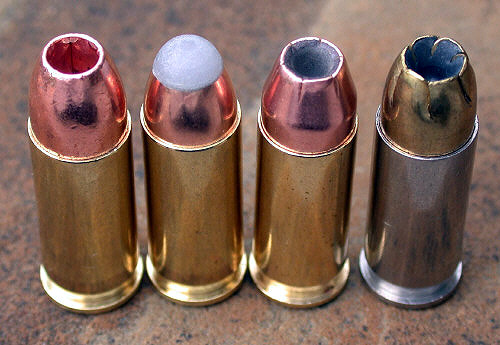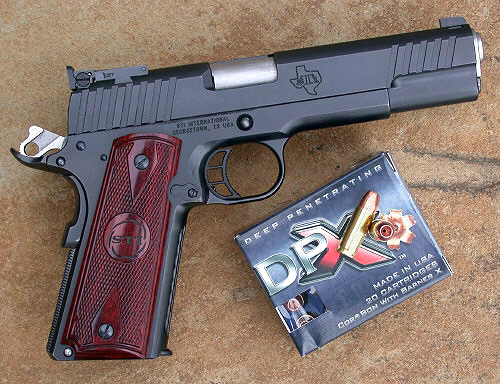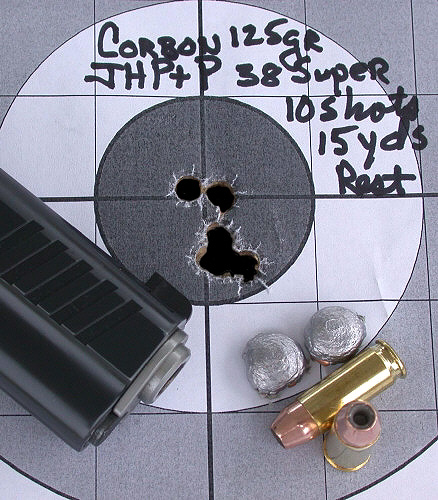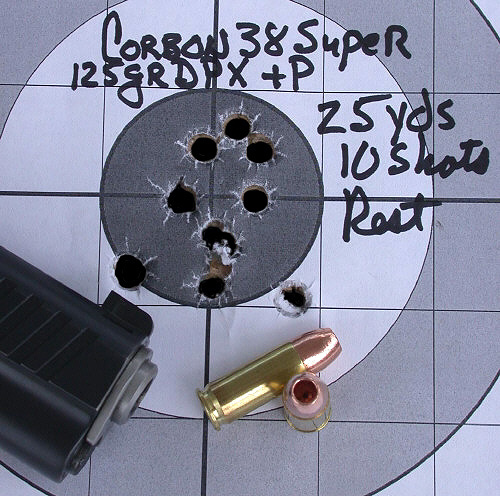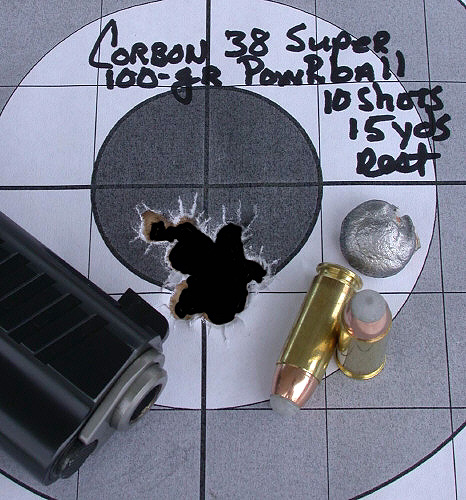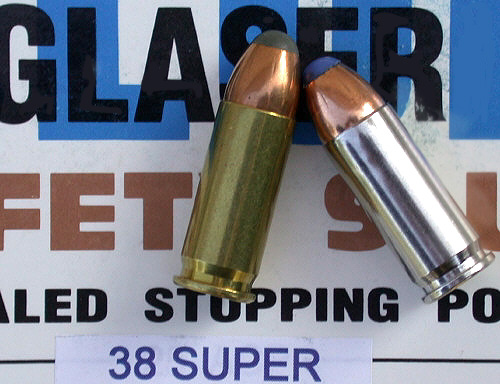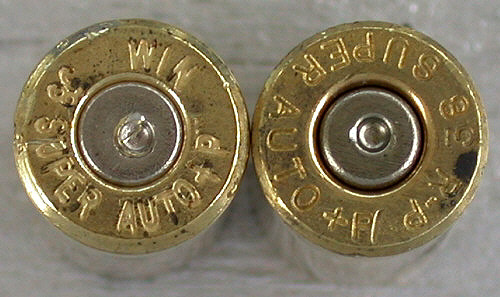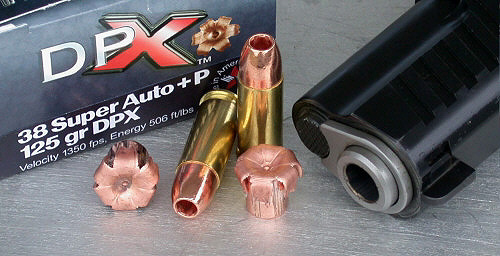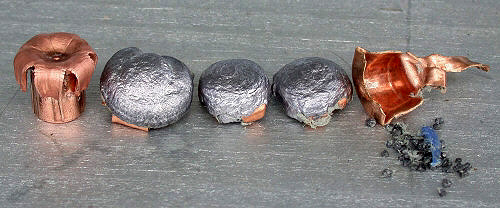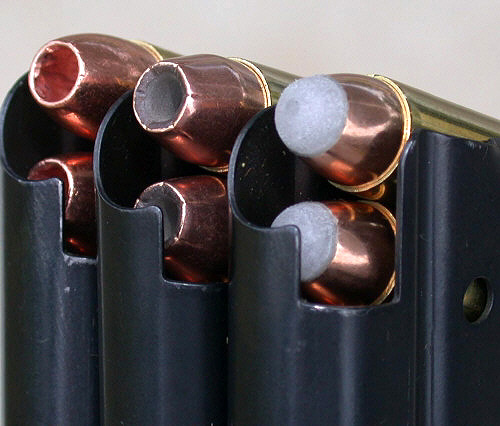"OLMERT" THE "EREV RAV" TRAITOR
.............................................................
Will Olmert survive this time?
PM survived failed war, several investigations, but latest affair may be political deathblow Attila Somfalvi Published: 05.02.08, 12:13 / Israel Opinion
There is no doubt now: Destiny does not miss any opportunity to test Olmert’s nerves and survival skills. Of all the difficult moments that the prime minister faced since assuming the post, the latest affair came at the worst timing for him. Just when it appeared that he controls the situation and the bad winds are calming a little, and just when more people were willing to give him another chance – he is hit with the investigation, which ruins everything he built and reminds us of all the bad thoughts about him. That’s the last thing he needed.
Whether true or not, the reports regarding the latest investigation are very grave. Even if there is an iota of truth in them, it is hard to believe that Ehud Olmert would be able to continue serving as prime minister; the thought of bundles of cash reaching the hands of the most important man in our political hierarchy prompt deep revulsion.
..........................................................................................................................................


G-D IS GOING TO USE THE WEATHER TO EXACT HIS REVENGE ON US FOR NOW. FOR ALL MY CHRISTIAN FRIENDS READ THE FOLLOWING FROM II TIMOTHY CHAPTER 3
..........................................................................................................
FROM THE HEBREW BIBLE
MICAH CHAPTER 5
I PERSONALLY HAVE NOT BEEN IMPRESSED WITH THIS "ROHRBAUGH" PISTOL AS I HAVE HAD A NUMBER OF THEM IN HERE WITH SEVERE FAILURES. THEY ARE TOO HIGH PRICED. THIS IS MY OPINION ONLY. WOULD I BUY ONE ?? = NO
TEDDY
www.truthaboutparts.blogspot.com
www.tjofsugarland.blogspot.com
www.handgunpartsforsale.blogspot.com
www.hipowersandhandguns.comhttp://www.jtf.org/news.php
http://www.spw-duf.info/links.html#guns
http://www.homelandsafes.com/
........................................................................................................................
MUST SEE VIDEO
http://www.youtube.com/watch?v=tzvrgQ5hOM4
...........................................................................................................................
ALMOST $1 TRILLION...
The Cost Of Bush's Wars...
.................................................................................................................................................Exclusive: Palestinian Hamas takes over Jordan's Muslim Brotherhood, looms over Egyptian Delta
May 2, 2008, 9:36 PM (GMT+02:00)

Hamam Said from Jenin takes over Jordan's Muslim Brotherhood
DEBKAfile’s Middle East sources disclose a signal victory in Hamas’ expansionist drive Friday, May 2, when its members scooped up 28 of the 50 seats of Jordan’s Muslim Brotherhood Shura Council in a secret ballot.
Hamam Said, 64, a Palestinian Hamas operative from the West Bank town of Jenin, was elected the movement’s General Guide by a single vote. Until 2005, Said, a trusted follower of Damascus-based hard-line Hamas chief, Khaled Meshaal, was a leader of the Jordanian Sawailah crime gang, which doubles as an extremist Islamist militia.
Jordan’s King Abdullah II sent his secret services to prevent Hamas sweeping the Muslim Brotherhood, which like its Egyptian branch is banned, but they failed.
Jordanian and Israeli counter-terror officers say the Palestinian Hamas takeover of the kingdom’s largest movement is potentially more destabilizing in regional terms than its victory in the Palestinian Authority’s 2006 election. It the short term, it presents hazards to Jordan’s internal security and could create new flashpoints on the long Jordanian-Israeli frontier.
DEBKAfile’s counter-terror sources report several arrests by Egypt’s security forces in Cairo, the central Delta town of Tanta and El Arish, northern Sinai, of fundamentalists suspected of founding a joint Hamas-Muslim Brotherhood armed cell at Tanta, Egypt’s fifth largest city, 94 km north of Cairo. Among them was Dr. Abd al-Farmawi, a lecturer at Al Azhar University’s local branch.
This was the first Brotherhood bid in half a century to branch out into military activism with the help of Hamas’ military wing.
The election of a Palestinian leader from Jenin by Jordan’s Muslim Brotherhood took place the day before several hundred American-trained Palestinian Authority security police were to be deployed in the same West Bank town.
The Olmert government agreed to their deployment to show US secretary of State Condoleezza Rice when she arrives Saturday, May 3, that Israel is meeting the Mahmoud Abbas-Salam Fayyad administration in Ramallah halfway.
Neither Israeli nor American leaders counted on Hamas’ move on Jordan, or took into account that the word of Hamam Said, the Hamas terrorist, will carry more weight in the terrorist stronghold of Jenin and the West Bank at large than the PA’s police force.
....................................................................................................................................................................
Handgun Review: Rohrbaugh R9 9mm
Text & Photos
by
I remember the first time I actually saw a Smith and Wesson J-frame .38 Special in person. The pictures in gun books were without perspective, and all those movie and television appearances never seemed to do the revolver justice. I was amazed (and continue to be impressed) with its fabulous combination of power yet small size. I am pleased to report a similar experience with a new entry into the pocket gun market from a new gun maker.
The Rohrbaugh R9 pistol has only been in steady production since the Spring of 2004, however, its makers have been working on the concept since 1996. They had 4 models on display at the Shot Show in February of 2004 when I ordered mine, and despite the tall price tag I have yet to experience any buyer’s remorse. In short, it’s most of what you’d want and more than you’d expect in a pocket sized semiautomatic pistol.
The version I obtained is the model R9S indicating 9mm Luger with sights (a .380 version is currently in development primarily for export). Initially, the gun was never intended to have sights by its makers who envisioned an ultra compact no-snag weapon that was designed for deep concealment and close range self defense. The accuracy of the pistol as well as overwhelming customer demand now puts the orders for sighted pistols at ~70%. Both the R9 and R9S have a stainless steel slide and each was initially offered in a choice of silver or gray anodized alloy frames. Recent concerns over the cosmetic quality of the silver anodizing have eliminated that option for now but a similar finish may be available in the future.

The R9 is a quality compact automatic that handles full-power 9mm. It would be easy to carry this handgun 24/7 where legal or as a back up gun.
The pistol is recoil-operated. This self-loader has a true double action only trigger. The trigger operates a hammer that sits flush with the slide when not activated. Since there is no need to “partially cock” the hammer by some mechanism of the action prior to firing, a “second strike” is permitted on any chambered cartridge that might fail to fire. The trigger is connected to the firing mechanism by way of a trigger bar that occupies a cutout in the right side of the frame. The trigger return spring is housed in a recess of the right grip just below the trigger bar channel where it’s protected by the frame on one side and the grip on the other. Grip panels are a blue/black carbon fiber, however, newer versions will come with all black grips made from a state of the art polymer known as G-10. The seams of all the moving parts as well as the grip to frame fit are very tight and will resist the intrusion of pocket lint or other undesirable debris.
The guide rails on the frame extend from just ahead of the trigger to the rear of the frame. The dual recoil spring operates with a captive inner spring and a larger outer spring that is held in place by a metal collar at the muzzle end inside the slide. The manufacturer recommends replacing the outer spring every 500 rounds, however, I saw no indications of fatigue in at least as many shots. The magazine holds 6 rounds single file and is held in place by a heel release at the bottom rear of the grip. I am often suspicious of heel releases that may easily be bumped and release the magazine, however, this particular design holds the magazine quite well and I have no such concerns. Since there are no other external controls, no grip/frame checkering, and the rear of the slide (and hammer) angles forward, the gun is literally snag free.
Sights are simple but adequate to the intended task. I’d prefer more front sight visibility, but I’m sure the application of a suitable orange paint will do the trick. The trigger pull is a very manageable 7 pounds with less than 1” of overall travel. For carry in any holster or inside an otherwise empty pocket, this combination seems safe enough. Those who prefer to carry without a round in the chamber will find the slide serrations sufficient to work the action without any problems. The length of the grip will accommodate two small to average size fingers and the trigger guard turns up towards the slide as it meets the grip frame to accomplish this with minimal overall size. The small size and light weight, coupled with full power modern 9mm ammunition, makes for somewhat snappy recoil, however, it’s no worse than a light .38 Special firing +P ammunition. Although not intended for +P 9mm ammunition, the performance of non-+P ammunition from the R9’s 3” barrel is not lacking.
Load Avg. Vel. Ext. Spread
Federal 135 gr. Personal Defense Hydra-Shok JHP 923 fps 22 fps
Federal 124 gr. HST JHP 1054 fps 92 fps
Speer 124 gr. Gold Dot Hollow Point 984 fps 22 fps
Winchester 115 gr. Silver Tip Hollow Point 1047 fps 37 fps
Winchester 115 gr. FMJ (USA brand) 1072 fps 40 fps
Fiocchi 115 gr. FMJ-HP 1046 fps 39 fps
Fiocchi 115 gr. FMJ 978 fps 46 fps
PMC 115 gr. JHP 976 fps 34 fps
PMC 95 gr. Starfire JHP 1166 fps 27 fps
Accuracy with each type of ammunition was also tested with six shot groups at 7 yards. The best of a pair of such groups is listed below. As one would expect the recoil and associated fatigue due to sustained and repeated firing was worse with higher bullet weights. I found all of the test groups to be satisfactory for a gun of the R9’s size and purpose. I picked a some of the better performers and tested them at 15 yards with predictable results: groups were roughly double their 7 yard counterparts but well within the 10.5” paper target and more than sufficient for most defensive applications at that range.
Load 6 shot group size (best of 2) from 7 yards
Federal 135 gr. Personal Defense Hydra-Shok JHP 4 7/8”
Federal 124 gr. HST JHP 3 1/2”
Speer 124 gr. Gold Dot Hollow Point 3 5/8”
Winchester 115 gr. Silver Tip Hollow Point 3 1/4”
Winchester 115 gr. FMJ (USA brand) 2 1/4”
Fiocchi 115 gr. FMJ-HP 3 1/2”
Fiocchi 115 gr. FMJ 4 1/8”
PMC 115 gr. JHP 3 5/8”
PMC 95 gr. Starfire JHP 2”
For a pistol that’s not much bigger than a pack of cigarettes and not much heavier than a can of diet cola (just 1 calorie and no carbs!) I consider these results to be anywhere from adequate to outstanding. It struck me that any gun this size that can make groups smaller than the gun at practical ranges is accurate enough.

Not intended as a target pistol, the R-9 can still deliver "minute of felon" groups at 7 yds.
How small is it? The short answer is that it’s 5” long, 4” tall, and under 0.9” at its widest point. Numerical descriptions like that are often wanting so to paraphrase a college professor I once knew, “Let’s talk geography before we talk geology”. There was a time when the SIG-Sauer 225 was considered a compact pistol. More modern successors are smaller, lighter, or hold more rounds in the magazine—frequently all three! The current state of the art in production pocket pistols is well-populated with revolvers and semiautomatics in a variety of calibers, configurations, sizes, weights, and capacities. Since not everyone’s favorite gun shop will have an R9 on the shelf, I’ve picked 3 that are more common to illustrate where the R9 fits into the list of options. The Kahr arms PM9 is slightly larger than the R9, but very similar in overall size and capacity. The Kel Tec P3AT is slightly smaller and quite a bit lighter than the R9, but only available in .380 ACP. Finally, the aluminum alloy framed Smith and Wesson Airweight .38 Special is a perfect watermark with which to compare these three relatively new pistols.
Firearm Height Length Thickness Capacity Weight (Empty Magazine)
S&W model 442 4 ¼” 6 ¼” 1.31” 5 15.1 oz
Kahr PM9 4 ¼” 5 5/8” 0.92”* 6+1 16.5 oz
Rohrbaugh R9 4” 4 5 1/8” 0.85” 6+1 14.1 oz
Kel Tec P3AT 5 ¼” 3 5/8” 5.14 0.79” 6+1 8.4 oz
(* Figure excludes slide stop, which is 1.15” at its widest part.)
The R9 is a nice synthesis of the best features of both the PM9 and P3AT. It has the more rounded and sloped lines of the P3AT with better sights and a more powerful cartridge.


The R9 is very comparable to other popular pocket automatics, but offers full-power 9x19mm in a quality handgun that is easily concealed.. The R9 is on the right in the picture on the left and in the middle in the other.
Disassembly of the R9 is very straightforward. After removing the magazine and clearing the chamber, simply draw the slide about 3/8” to the rear and push out the retaining pin above the trigger from right to left. A punch is useful for this task, however, a toothpick will suffice given that the pin is not held in place with any tension--the slide will then come forward, off the frame. The remainder of the frame need not be disassembled for routine cleaning and the slide components can be removed from the slide assembly in the same way as most other pistols. The retaining collar of the outer recoil spring is the only unusual feature and it’s function and placement is obvious. The loose end of the outer recoil spring goes towards the muzzle with the flat portion towards the rear of the guide rod assembly. Reassembly is accomplished in the reverse order with some care needed not to insert the rear end of the guide rod assembly too high against the barrel thus obstructing its fit in the frame.

Rohrbaugh's R9 pistol is compact and in a caliber offering a wide selection of ammunition from state-of-the-art defense rounds to inexpensive FMJ for the range.
For more information on these firearms, see their web site at www.rohrbaughfirearms.com. Check out the on-line forum of users at http://www.rohrbaughforum.com, or call at1-800-803-2233. Their mailing address is:
Rohrbaugh Firearms
P.O. Box 785
Bayport, NY 11705
.......................................................................................................................................
'Bush planning to attack Iran this year'
Thu, 01 May 2008 06:05:57
 Ray McGovern |
McGovern who has been a CIA officer under seven US presidents--presenting the morning intelligence briefings at the White House for many of them--believes President Bush and his administration have no intention of leaving Iraq and are preparing to attack Iran in the next few months.
"I believe George Bush and Dick Cheney plan to take care of Iran before they leave office," the former CIA official said in an interview with Charleston Gazette, which was published on Wednesday.
McGovern also pointed to the US-led war in Iraq and said that the war had several motives, including giving a "rebuke" to Saddam Hussein, supporting Israel, controlling oil reserves and expanding permanent US military bases in the Middle East.
He also praised Navy Adm. William J. Fallon, the former commander of the US Central Command. Fallon was forced out shortly after Esquire magazine published a profile of his career that highlighted his strong opposition to any war with Iran and his desire to reduce troop levels in Iraq.
"Fallon was our last hope," McGovern said.
.......................................................................................................................................



........................................................................................................................................................................
Editorial
THERE are speculations galore that between now and June, before things slide into the thick of American election, Israel is likely to attack Iran, with the latter reacting with a quick ripostethus starting a mutually bruising war in the gulf. We couldn't care less if either Democrats or Republicans benefit from the possible catastrophe, but it does worry us in this region as to what might happen to Afghanistan and Pakistanboth Iran's neighbours but closely aligned to the United states. India, another US ally whom the US administration has been able to have on her side in its stand-off with Iran, will also matter in the ensuing conflict. How the next armageddon in a region close to ours will be eventually played out in the present milieu is of profound interests to observers. To make matters complex, a number of ethnic economic factors are also involved. Thus, the scenario appears alarmist and, hopefully, it is just that.
The June deadline for a possible Israeli assault on Iran has come from diplomats who watch the Middle East closely, some of them having been interacting with Israeli officials, others with Iran and its neighbours in the region. Their lunch matches the circumstantial evidence, not excluding, of course, the increased chatter within the media community about Dick Cheney's visit to the Gulf.
Cheney's swing tour included Oman and Israel, and is thought to be of significance. In Israel, he is believed to have given the proverbial green light to Prime Minister Olmert to take the course that best suited him vis-a-vis Iran and its proxies in Syria and Lebanon. Oman, on the other hand offers the best view of the perennially vulnerable Hormuz straits, from where much of the world gets its oil supply. The month of June provides the last clear-weather military opportunity to Israel to pick targets in Iran before rains arrive there in July. Soon after, there will be the excitement of US elections.
There are several other indications of the looming disaster. Apart from frequent alerts about Israel distributing gas masks to its citizens, there was the wire agency story during the week from Jerusalem. It quoted Israel's National Infrastructure Minister Ben Eliezer as warning that Israel would respond to any Iranian attack by destroying that country. Ben Eliezer's ominous remark was carried on Israel's public radio. Referring to an ongoing five-day home front defence exercise he claimed that it was not meant to threaten Israel's neighbours, but the “scenarios considered in the exercise could be reality tomorrow.”
Dick Cheney, while visiting Israel last month, was told by Defence Minister Ehud Barak that “no option would be ruled out in Israel's attempt to stop Iran from acquiring nuclear weapons,” yet there seems to he a unanimity of opinion with regard to the consequences of an Israeli attack on Tehran's nuclear target. Almost everyone agrees that it will be different from the 1981 destructions of the Osirak nuclear facility in Iraq. Israel may not be able to get away with it in case of Iran, whose response can be seriously debilitating for the entire gulf region and beyond. This brings us to the question; what impact would it have on South Asia that would be different from 1990, when “Desert Storm”the first gulf warwas enacted in the wake of Saddam Hussain's occupation of Kuwait?
Removed from the equation this time around are Rajiv Gandhi and Benazir Bhutto, both outspoken critics of imperialism that greatly worried the US-led coalition, with their parties no longer evidently keen to challenge the US game plan even if it brings rack and ruin. The coast should be clear for any strategic help that might he needed, after the advent of Dr Manmohan Singh as the economic messiah for corporate India, which he still remain in addition to his being at the helm of the ruling UPA government. In Pakistan, a West-friendly Nawaz Sharifalso a part of new coalition governmentwill provide ballast to the emerging equation in South Asia in favour of a new US adventure in the gulf.
However, in the West's disfavour, the only flaw in the scenario is that the on-going war on terror has not quite accomplished anything that resembles a victory for its mainly pro-western advocates. And that has the potential of disturbing all calculations, including the ones favoured by India and Pakistan in recent days of their rare thaw. Afghanistan, with its huge problems under its US protected and Kabul-bound chieftain Hamid Karzai, is more of a liability for the West than an asset.
Often, the tectonic effects of a seemingly distant conflict are closer to us than we imagine. Sometimes, on the other hand, we imagine these effects when there is none. It all depends on how the impending armageddon will be played out.
.........................................................................................................................................................................





 Although Senator McCain recently told George Stephanopoulos in an interview that his seeking of Hagee's endorsement was "probably" a mistake, he then doubled back to affirm his approval of Hagee's endorsement, stating, "I'm glad to have it."
Although Senator McCain recently told George Stephanopoulos in an interview that his seeking of Hagee's endorsement was "probably" a mistake, he then doubled back to affirm his approval of Hagee's endorsement, stating, "I'm glad to have it."


